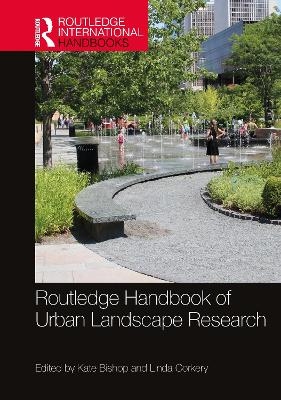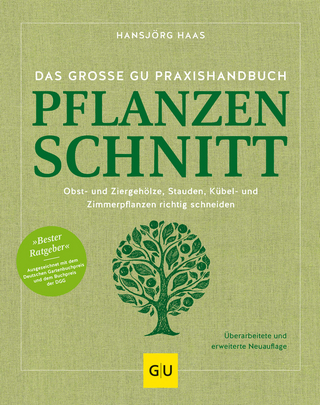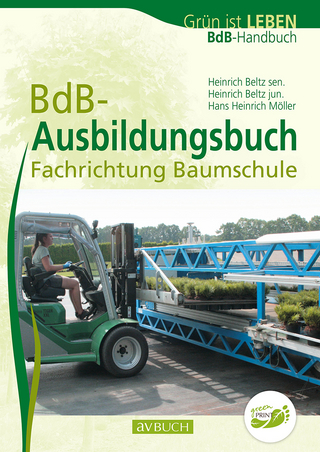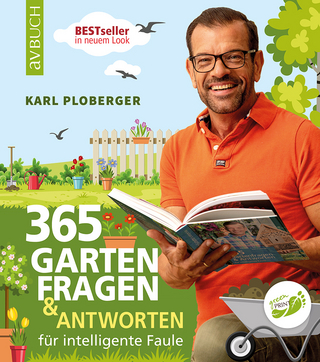
Routledge Handbook of Urban Landscape Research
Routledge (Verlag)
978-0-367-62525-2 (ISBN)
The book has assembled current writings on recent research structured around five major themes: governance, power and partnership; infrastructure, systems and performance; environment, resilience and climate change; people, place and design; and culture, heritage and identity. As a collection, the chapters demonstrate the diversity of themes and topics that are expanding the scholarly body of knowledge for the discipline and its relevance to the practice of landscape architecture.
The contributors to this book are academic researchers and practitioners from the discipline of landscape architecture. The chapters draw on their research, teaching and experience as well as analysis of project examples. Fifty-two contributors from the United Stsates, United Kingdom, Sweden, Denmark, the Netherlands, Nigeria, Malaysia, Spain, Colombia, Australia, New Zealand and Canada discuss a diverse range of contemporary themes in urban landscape architecture. Collectively, the contributors demonstrate the breadth of experience, shared concerns and distinct issues that challenge urban landscape architecture and cities in the 21st century.
Kate Bishop is Associate Professor and Discipline Director of Landscape Architecture, Faculty of Built Environment, at the University of New South Wales in Sydney, Australia. Kate’s background in environment-behavior research underpins her teaching and research and her particular area of interest: children, youth and environments. She specializes in the research and design of environments for children with special needs, child and youth-friendly urban planning and design, and participatory methodologies with children and young people. Kate worked in private industry and government before becoming an academic. Linda Corkery is Professor Emerita, Landscape Architecture, at the University of New South Wales in Sydney, Australia. Throughout her academic and professional career, Linda has focused on the planning and design of public landscapes and their social dimensions, provision of greenspace in high-density cities, and planning and design for inclusive public spaces. Her research and publications consider public open space and parklands as essential green infrastructure features supporting urban ecologies, as well as human health and well-being. Linda is a fellow of the Australian Institute of Landscape Architects and a founding director of the Landscape Foundation of Australia.
Landscape Architecture: Playing a Vital Role in a Time of Climate Crisis, Global Urbanization and Social Upheaval
Linda Corkery and Kate Bishop
Section 1: Governance, Power and Partnerships
1. Integrated and Long-Term Approaches to Urban Landscape Development: the Option of Combined Governance and Management
Thomas Randrup and Märit Jansson
2. Transforming the Abandoned Urban Landscape
Jill Desimini
3. Reimagining Landscape: Landscape-led Governance to Support Future Transformation and Change
Marina Cervera Alonso de Medina, Kathryn Moore and Peter Larkham
4. Bicycle Infrastructure Design and Street politics: From Bourke Street’s Flagship Project to COVID-19 Pop-Ups
Mike Harris
5. Achieving Tree-lined Streetscapes in Western Sydney: Intentions Versus Reality
Christina Silk
Section 2: Infrastructure, Systems and Performance
6. Air Quality, Heat and Health: The Role of Green Infrastructure
Louise McKenzie, Paul Osmond and Andrea Mechelli
7. The Parametric Paradigm: The Implementation of the Digital Design Technology
Nadia Amoroso, Christine Pedersen and Afshin Ashari
8. Technology and its Role in the Public Realm
Nancy Marshall
9. Above and Beyond: Aerial Technologies, Atmosphere and Landscape
Paul Cureton, Rupert Griffiths and Nick Dunn
10. Reclaiming Australian Peri-Urban Territories for Landscape Architecture: A Rationale for Change?
Sara Padgett-Kjaersgaard
11. Aesthetics and Performance of Stormwater Infrastructure
Yuanqiu Feng and Joan Iverson Nassauer
12. Landscape Lifecycles: Renewed Principles for Waste in Urban Landscape Design
Catherine De Almeida
Section 3: Environment, Resilience and Climate Change
13. Applied Urban Resilience Framework: Operationalizing Resilience in Urbanized Landscapes through Spatial Design
João Cortesão and Claudiu Forgaci
14. Three Forms of Resilience Learned from the Safe-to-Flood Landscape of the Upper Mekong Delta
Elisa Palazzo, Bruno Pelucca, Sylvie Tram Nguyen and Shirleyana Shirleyana
15. Rethinking Green Infrastructure Planning: Making Green Space Work in Times of Financial, Social and Ecological Uncertainty
Ian Mell
16. Research Questions for Dynamic Landscapes in a Rapidly Changing Tropical City
Yun Hye Hwang and Shawn Lum
17. Urban Energy Infrastructure Transitions: The Participation of Local Citizens in the Development of Smart Local Energy Systems and Sustainable Heating
Fionnguala Sherry-Brennan, Chad Walker and Patrick Devine-Wright
18. Changing Landscapes, Changing Mindsets: Building Capacity Toward Action in the Climate-adaptive Design Studio
Joshua Cerra and Libby Zemaitis
19. A Multidimensional Sustainability Framework for Landscape Architecture: Are Diverse Outcomes Being Realized in Design Practice?
Joshua Zeunert
Section 4: People, Place and Design
20. The Alnarp Method: An Interdisciplinary Based Design of Holistic Healing Gardens Derived from Research and Development in Alnarp Rehabilitation Garden
Patrik Grahn, Anna Bengtsson and Jonathan Stoltz
21. Townscape Analysis: A Comprehensive Methodology for Landscape and Urban Design
Beverly Sandalack
22. Urban Agriculture: Nourishing Cities
Linda Corkery
23. Did Children’s Relationship with Urban Public Space Change in the Years of COVID-19?
Kate Bishop
24. The Role of Ojudes in the Socio-cultural Well-being of Children in Ilorin City, Nigeria
Aishat Tayo Abubakar, Mohd Hisyam bin Rasidi and Ismail Said
Section 5: Culture, Heritage and Identity
25.Dealing with Difficult Memories: Treatments for the Wounds of Urban Landscapes
Jacky Bowring
26. Revisiting Post-War Green Open Spaces as ‘Welfare Landscapes’
Ellen Braae
27. Conflict and Peace: The Physical and Social effects on the Landscape of Colombia’s Informal Settlements
Jaime Hernández-García and Beau Beza
28. A Line Through a City: Using Transects to Uncover Patterns, Experiences and Histories of Everyday Landscapes
Cory Parker and Patsy Eubanks Owens
Landscape Architecture Remaining Inspired, Engaged and Grounded in the Face of Global Challenges
Kate Bishop and Linda Corkery
| Erscheinungsdatum | 07.12.2022 |
|---|---|
| Reihe/Serie | Routledge International Handbooks |
| Zusatzinfo | 12 Tables, black and white; 9 Line drawings, black and white; 76 Halftones, black and white; 85 Illustrations, black and white |
| Verlagsort | London |
| Sprache | englisch |
| Maße | 174 x 246 mm |
| Gewicht | 934 g |
| Themenwelt | Sachbuch/Ratgeber ► Natur / Technik ► Garten |
| Naturwissenschaften ► Biologie ► Ökologie / Naturschutz | |
| Naturwissenschaften ► Geowissenschaften ► Geografie / Kartografie | |
| Technik ► Architektur | |
| ISBN-10 | 0-367-62525-3 / 0367625253 |
| ISBN-13 | 978-0-367-62525-2 / 9780367625252 |
| Zustand | Neuware |
| Informationen gemäß Produktsicherheitsverordnung (GPSR) | |
| Haben Sie eine Frage zum Produkt? |
aus dem Bereich


